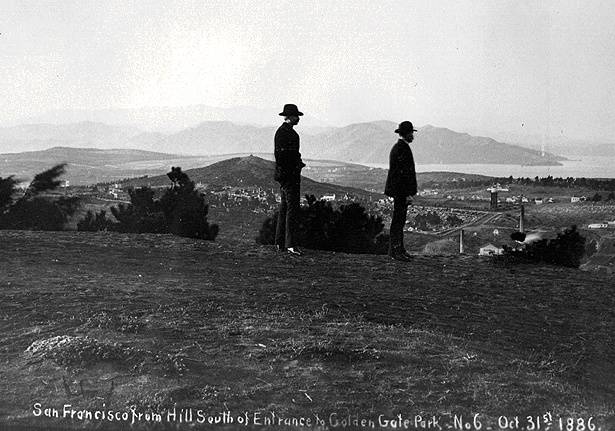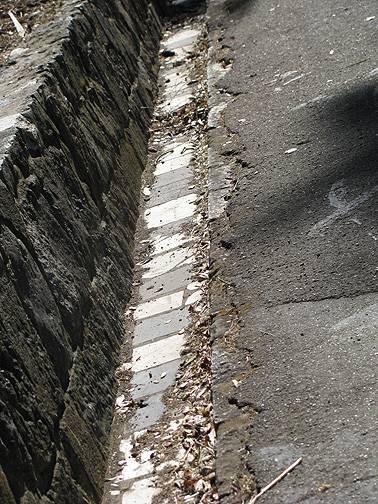Buena Vista Park: Difference between revisions
No edit summary |
(Changed credits from Greg Garr to Private Collection) |
||
| (2 intermediate revisions by one other user not shown) | |||
| Line 1: | Line 1: | ||
'''<font face = Papyrus> <font color = maroon> <font size = 4>Primary Source</font></font> </font>''' | |||
[[Image:Hashbury%24buena-vista-view-1886.jpg]] | [[Image:Hashbury%24buena-vista-view-1886.jpg]] | ||
'''View from Buena Vista Peak in 1886.''' | '''View from Buena Vista Peak in 1886.''' | ||
''Photo: | ''Photo: Private Collection, San Francisco, CA'' | ||
Climb the stairway at the southwest corner of Haight and Buena Vista West and ENTER [[Buena Vista History|BUENA VISTA PARK]]. The park was so named by the Spaniards who traveled past it regularly on the trip from the Mission to the Presidio. In 1868, San Francisco set Buena Vista aside as one of its earliest parks. It was chosen for two reasons. It was one of the few areas of San Francisco where there were native trees and shrubs, and it was a natural choice for a city contemplating expansion westward. Secondly, it is San Francisco's fourth highest hill and boasts a commanding view of the city. One doesn't have to climb Buena Vista's 569 feet to recognize that it was appropriately named. | Climb the stairway at the southwest corner of Haight and Buena Vista West and ENTER [[Buena Vista History|BUENA VISTA PARK]]. The park was so named by the Spaniards who traveled past it regularly on the trip from the Mission to the Presidio. In 1868, San Francisco set Buena Vista aside as one of its earliest parks. It was chosen for two reasons. It was one of the few areas of San Francisco where there were native trees and shrubs, and it was a natural choice for a city contemplating expansion westward. Secondly, it is San Francisco's fourth highest hill and boasts a commanding view of the city. One doesn't have to climb Buena Vista's 569 feet to recognize that it was appropriately named. | ||
Latest revision as of 15:08, 16 June 2014
Primary Source
View from Buena Vista Peak in 1886.
Photo: Private Collection, San Francisco, CA
Climb the stairway at the southwest corner of Haight and Buena Vista West and ENTER BUENA VISTA PARK. The park was so named by the Spaniards who traveled past it regularly on the trip from the Mission to the Presidio. In 1868, San Francisco set Buena Vista aside as one of its earliest parks. It was chosen for two reasons. It was one of the few areas of San Francisco where there were native trees and shrubs, and it was a natural choice for a city contemplating expansion westward. Secondly, it is San Francisco's fourth highest hill and boasts a commanding view of the city. One doesn't have to climb Buena Vista's 569 feet to recognize that it was appropriately named.
Buena Vista Park gutter paved with marble headstones from old cemeteries.
Photo: Chris Carlsson
As you WALK SOUTHWESTWARD TOWARDS WALLER STREET note the rain ditch along the pathway. In 1901, the San Francisco Board of Supervisors banned the burial of the dead within city limits. Thirteen years later, the Board ordered the removal of all corpses from city cemeteries. The ordinance provided new land for residential development but also ample marble for city projects. The drain here is laid with tombstones from the cemeteries which covered the slopes of Lone Mountain.


